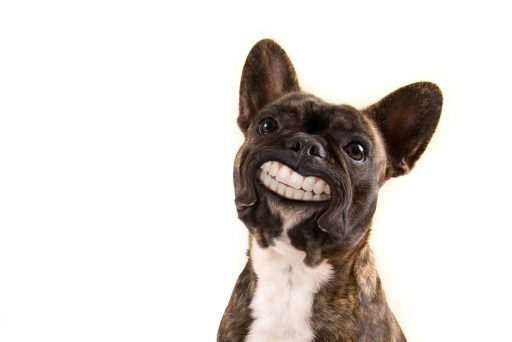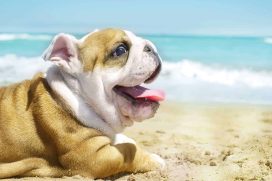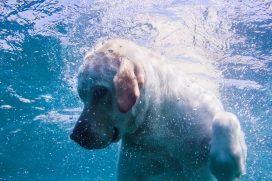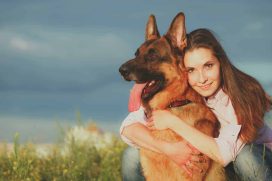Adult dogs usually have 42 teeth in total.
Dogs use their teeth for everything from eating to playing to self grooming. Not all dogs will have a full set of teeth and it’s very common for some teeth to fall out or get damaged over time.
As a dog owner, it’s important to make sure your dogs teeth are healthy, strong and pain free. Regular checks by you and your vet, along with a healthy diet will go a long way towards keeping your dogs teeth intact.
How many types of Permanent teeth do dogs have?
Adult dogs have 4 different types of teeth in their mouth.
Just like humans, a dog has different types of teeth for different jobs.
All dogs have 4 main types of teeth; incisors, canines, molars and premolars. Unlike most humans, they don’t have wisdom teeth.
Depending on the size and breed of dog, the teeth can be spread out or squashed together. It usually depends on the size and shape of the jaw, but generally bigger dogs have teeth that are spread out more evenly. This can help with dental hygiene, and less problems with decay as they get older.
Here’s a breakdown of the different teeth and what they are used for:
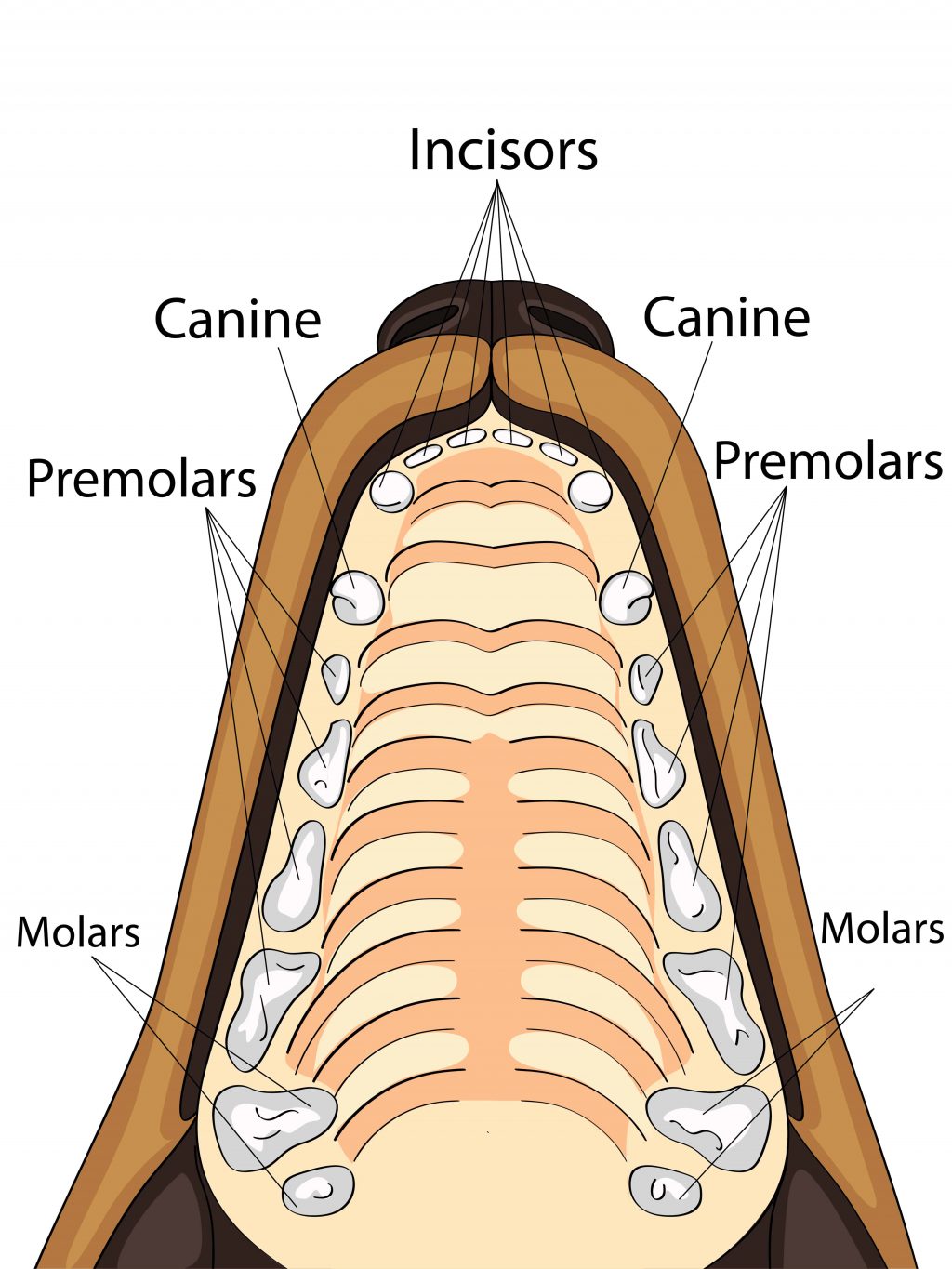
Incisors – These are positioned to the front of the mouth, and there are 12 in total. These are often the smallest teeth and are used for gripping and tearing. They are generally sharper than other teeth, and can be used while playing (mouthing) and for pulling toys. They are also used while eating, for tearing or biting the food before it’s passed back to the molars for chewing.
Canines – Adult dogs have 4 canine teeth, 2 at the top and 2 at the bottom. These pointy, vampire like teeth often take the most abuse, and can wear down or break if your dog is an avid chewer of hard objects. Canine teeth are very strong, and combined with the strength of their jaw, can make it very difficult to retrieve a stolen slipper from your dogs mouth! Just like incisors, they are used for ripping and tearing food that will be passed back to the molars.
Premolars – Premolars are positioned just behind the canine teeth and are used for chewing and sometimes tearing. Premolars are the most used teeth in your dogs mouth, and are susceptible to decay if they are not kept clean. They are mainly used for grinding up larger pieces of food, but are also used for chewing toys and bones as they are closer to the front of the mouth than the molars. An adult dog has 16 premolars in total.
Molars – The molars are the toughest teeth in the dog’s mouth. They are extremely hard, and lie low in the mouth, almost against the gum line. This makes them great for chewing and grinding up really hard food such as raw bones. There are 10 molars in total in your dogs mouth, 4 in the top jaw and 6 in the bottom.
Can dogs get a tooth ache?
Yes, dogs can get a tooth ache.
If your dog has a broken or decayed tooth it’s going to be in pain. Unfortunately, just like any other kind of injury, your dog will feel pain but won’t be able to tell you. This is why it’s very important to keep an eye on the condition of your dog’s teeth and to get them checked at least once a year by a qualified vet.
How can you tell if your dog has a toothache?
A dog with a sore tooth or sore gum will usually show some signs of distress. Depending on their diet, they may still be able to eat ok, but might just use one side of their mouth.
A dog toothache is usually caused by an infection in the gum or decayed tooth, so your dog may have bad breath or bleeding from the area that is damaged.
Other signs of a dog toothache are a reluctance to chew hard foods or toys and not wanting to be touched on the head or jaw. If your dog is old or has a compromised immune system, then a tooth infection can be life threatening if left untreated.
If you suspect that your dog has a toothache it’s important to get it checked out straight away. Usually the rotten tooth will be removed while your dog is sedated, and your vet will prescribe a course of antibiotics to help clear up any remaining infection.
How To Keep Your Dog’s Teeth Clean
Just like your own teeth, it’s better to prevent tooth decay than to try and treat it.
Your dog doesn’t think about dental hygiene, so it’s up to you to keep an eye on the condition of his teeth for him.
1. Feed A Raw Diet
The easiest way to stop your dog from getting tooth decay is to feed him a good quality diet with plenty of fresh meat, fruit and vegetables. Ideally, a raw meat diet that is low in sugar, carbohydrates, fillers and additives will help to keep oral bacteria to a minimum in your dogs mouth.
Fresh, raw bones are also a great way for your dog to clean his own teeth. Larger, weight bearing bones that your dog can chew on will help to clean between their teeth and will promote the production of saliva in the mouth too.
2. Brush Teeth
Many vets also recommend brushing your dog’s teeth regularly to help prevent the build up of plaque and sticky substances. This is not always the best approach to dog dental hygiene, as most dogs won’t like you sticking your finger in their mouth.
3. Dog Chews
Toy bones and chewable toys are a good alternative to raw bones. Nearly all dogs like chewing on bones, it’s in their DNA and it not only cleans their teeth, but is great way to focus their energy and calm them. I find that synthetic dog chews such as Nylabones work great.
If you are going to give your dog a bone, make sure its a raw bone, or a good quality chewable bone. Most of the time they are very safe, but don’t leave your dog unsupervised with any type of bone as they sometimes can splinter or break.
4. Professional Cleaning
Taking your dog to get his teeth cleaned might sound crazy, but it’s often a necessary procedure recommended by vets. If there is a substantial build up of plaque in a dogs mouth, it can lead to discomfort, difficulty eating, gum disease and tooth loss.
Contrary to popular belief, this is not a regular cosmetic procedure, and should not be carried out unless necessary. This is because it’s usually carried out under general anaesthesia, which can be dangerous for some dogs.

